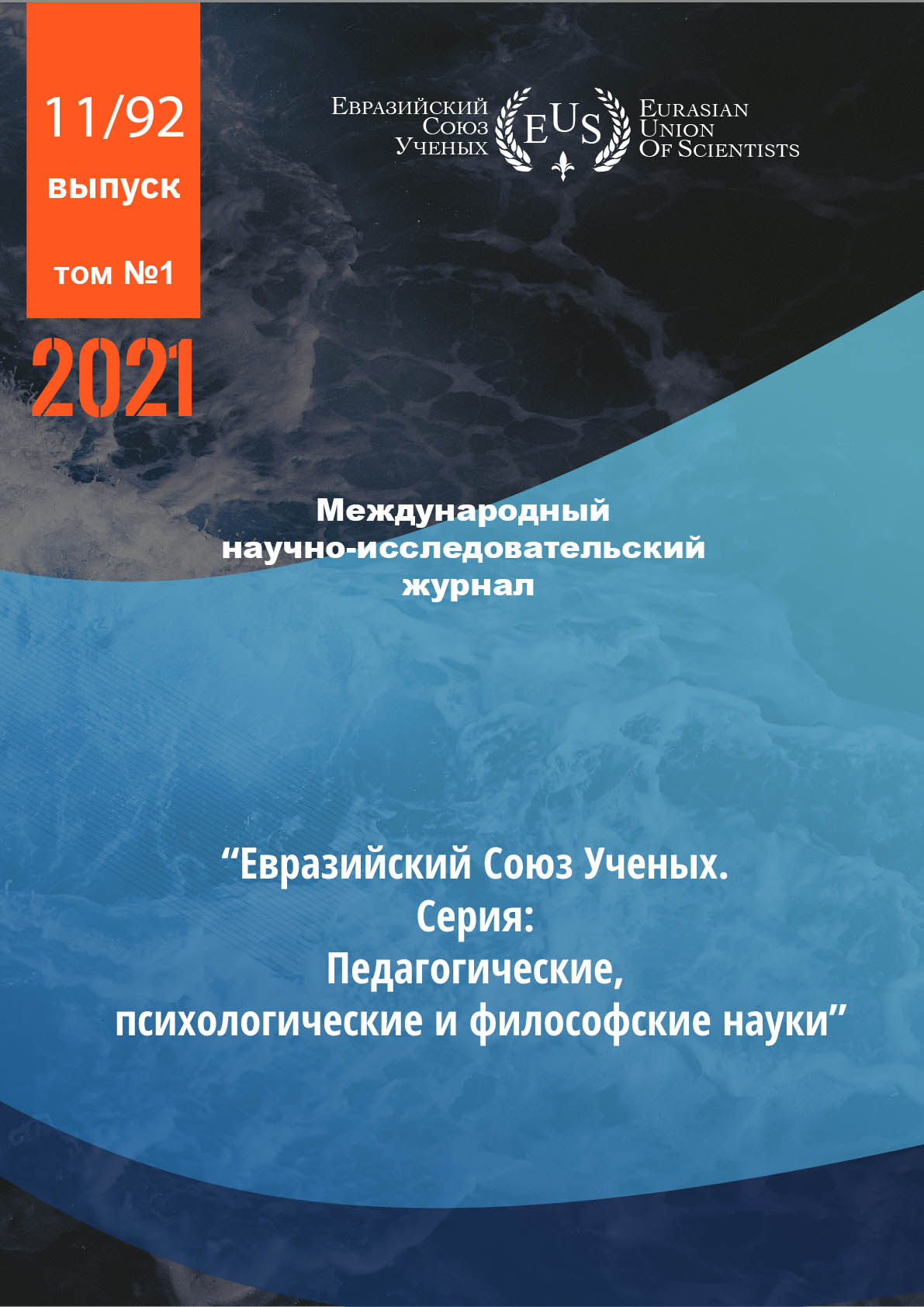TEACHING STUDENTS IN MODERN CONDITIONS
Abstract
The rapid forced transition to distance learning in the spring of 2020 served as an impetus for the development and introduction of new forms of education. Such a massive introduction of distance learning quickly revealed the advantages of traditional full-time education.
The first meetings with students after the experimentally remote semester showed a noticeable loss of students of some of the learning skills, for example necessary for working in a team. In addition, it is impossible to teach many technical disciplines qualitatively to a student without his presence in the classroom.
In the course of individual remote work with students (which entailed increased time costs), it became clear to teachers which points in the course should be paid more attention to, what to change in the presentation of educational material.
Thanks to technological progress, new ways of conducting classes have appeared in a remote form. Such classes can complement traditional full-time education
References
Lukin, V. N. Distancionnoe obuchenie: problemy i resheniya / V. N. Lukin // Modelirovanie i analiz dannyh. – 2021. – T. 11. – № 2. – S. 74-88. [Lukin V. N. Distance Learning: Problems and Solutions / V. N. Lukin // Modelling and Data Analysis. – 2021. – Vol. 11. – № 2. – P. 74-88. (in Russ)]. https://doi.org/10.17759/mda.2021110205.
Neborskij, E. V. Perehod na distancionnoe obuchenie v usloviyah COVID-19 v ocenkah professorsko-prepodavatelskogo sostava / E. V. Neborskij, M. V. Boguslavskij, N. S. Ladyzhec i dr. // Perspektivy nauki i obrazovaniya. – 2020. – № 4(46). – S. 99-110. [Neborskij E. V. Transition to distance learning under covid-19 in assessments by professors / E. V. Neborskij, M. V. Boguslavskij, N. S. Ladyzhec and others // Perspectives of Science and Education. – 2020. – № 46(4). – P. 99-110. (in Russ)]. DOI 10.32744/pse.2020.4.6.
Kurkin, A. V. Distancionnyj podhod k obucheniyu / A. V. Kurkin, A. A. Myshkina // Nedelya nauki Sankt-Peterburgskogo gosudarstvennogo morskogo tehnicheskogo universiteta. – 2020. – T. 2. – № 4. – S. 43. [Kurkin A. V. Distance learning approach/ /A. V. Kurkin, A. A. Myshkina // Nedelja nauki Sankt-Peterburgskogo gosudarstvennogo morskogo tehnicheskogo universiteta. – 2020. – Vol. 2. – № 4.– P. 43 (in Russ)].DOI
10.52899/9785883036063_598.
Selejdaryan, R. M. Nyuansy distancionnogo obucheniya v vuze / R. M. Selejdaryan, E. O. Tishenko // Aktualnye voprosy sovremennogo obrazovaniya. Nyuansy distancionnogo obucheniya: Sbornik materialov mezhvuzovskoj nauchno-metodicheskoj konferencii, Rostov-na-Donu, 22 yanvarya 2021 goda. – Rostov-na-Donu: Rostovskij gosudarstvennyj medicinskij universitet, 2021. – S. 102-107. [Selejdarjan R. M. Nuances of distance learning in higher education institutions/ R. M. Selejdarjan, E. O. Tishhenko // Aktual'nye voprosy sovremennogo obrazovanija. Njuansy distancionnogo obuchenija: Sbornik materialov mezhvuzovskoj nauchnometodicheskoj konferencii, Rostov-na-Donu, 22 janvarja 2021 goda. – Rostov-na-Donu: Rostovskij gosudarstvennyj medicinskij universitet.– 2021. – P. 102-107. (in Russ)]
Poddubnaya, T. N. Distancionnoe obuchenie kak faktor povysheniya effektivnosti obrazovatelnogo processa / T. N. Poddubnaya // Vestnik Majkopskogo gosudarstvennogo tehnologicheskogo universiteta. – 2021. – № 1(13). – S. 67-72. [Poddubnaja T. N. Distance learning as a factor of increasing the efficiency of the educational process / T. N. Poddubnaja // Vestnik Majkopskogo gosudarstvennogo tehnologicheskogo universiteta. – 2021. – № 1(13). – P. 67-72. (in Russ)]. https://doi.org/10.47370/2078-1024-2021-13-1-67-72. Pushnova, V. V. Distance learning: technology of the future / V. V. Pushnova // Tehnika. Tehnologii. Inzheneriya. – 2020. – № 2(16). – S. 16-19. [Tehnika. Tehnologii. Inzhenerija. – 2020. – No 2(16). – P. 16-19. (in Eng)]
Levin, S. M. Distance learning on the pandemic wave / S. M. Levin // Innovacionnye nauchnye issledovaniya. – 2021. – No 5-2(7). – P. 243-250. [Innovative scientific research. – 2021. – No 5-2(7). – P. 243-250/ (in Eng)]. https://doi.org/10.5281/zenodo.5041103 .
Kostin, G. A. Distancionnoe obuchenie: panaceya ili vynuzhdennaya neobhodimost? / G. A. Kostin, S. N. Panin // Uchenye zapiski Sankt Peterburgskogo universiteta tehnologij upravleniya i ekonomiki. – 2020. – № 3(71). – S. 59/ [Kostin G. A Distance Learning: Panacea or Necessity? / Kostin G. A., Panin S. N. // Uchenye zapiski Sankt-Peterburgskogo universiteta tehnologij upravlenija i jekonomiki. – 2020. – № 3(71). – P. 5-9. (in Russ)]
CC BY-ND
A work licensed in this way allows the following:
1. The freedom to use and perform the work: The licensee must be allowed to make any use, private or public, of the work.
2. The freedom to study the work and apply the information: The licensee must be allowed to examine the work and to use the knowledge gained from the work in any way. The license may not, for example, restrict "reverse engineering."
2. The freedom to redistribute copies: Copies may be sold, swapped or given away for free, in the same form as the original.





